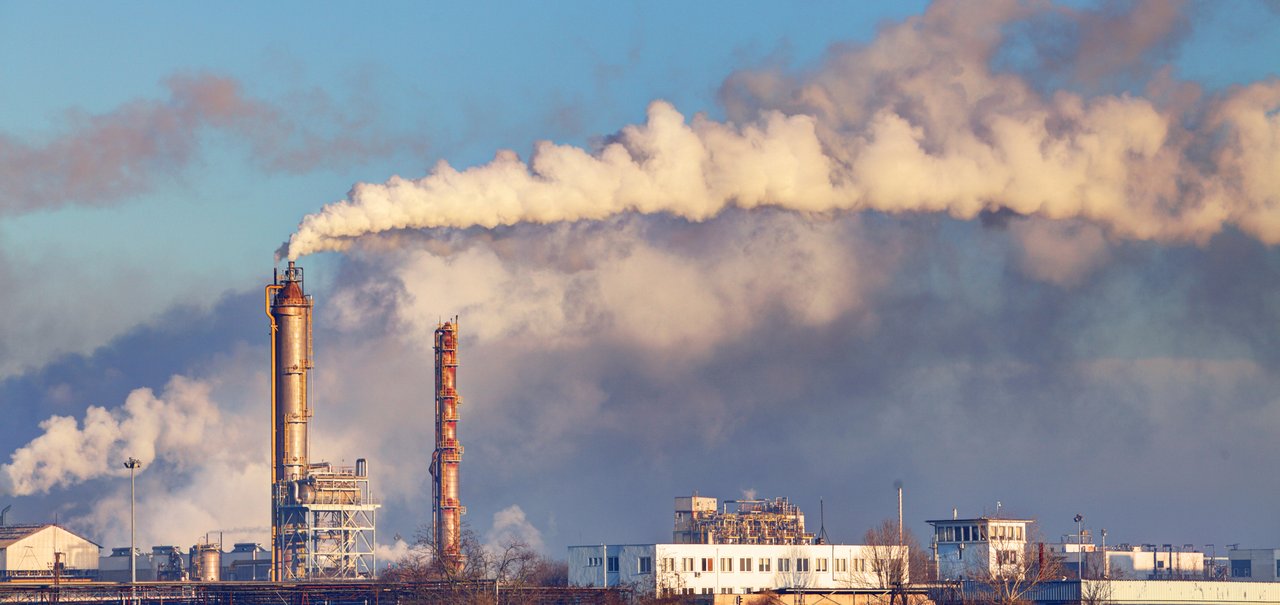Responsible for trapping heat in the atmosphere and causing record rates of global warming on the planet, Greenhouse gases are often presented as history’s greatest villainsBut they are a natural and important part of the Earth’s climate system.
Without the natural greenhouse effect, the ideal temperature for making Earth habitable (about 15°C) would drop to -18°C. However, human activities have artificially increased the concentrations of some of these gases in the atmosphere, especially carbon dioxide, thus amplifying the natural greenhouse effect and causing unprecedented global warming.
Below you can find the most important gases that, when added to the atmosphere, make the fight against climate change even more difficult.
Carbon dioxide: the godfather
It is impossible to talk about greenhouse gases without mentioning the champion, if not the most powerful, at least in terms of emissions: last year alone, human activities released 37.4 billion tons of CO₂ into our atmosphere. The largest sources were: power plants, transportation and industrial activities,
Moreover, it is the greenhouse gas that we emit the most and is the most important in staying in the atmosphere, even while writing or reading. The part that is not included in the carbon cycle (oceans, forests or other ecosystems) can affect the Earth’s protective layer for centuries..
Methane: fire on the plate

CO₂ is found in the atmosphere at around 419 parts per million (ppm), while methane is around 1.9 ppm. But despite being 220 times less concentrated, it represents about 30% of the warming we are currently experiencing, which gives some idea of its ability to trap heat..
It has a shorter lifespan, between 10 and 12 years, but in this short time it causes 80 times more damage than CO₂ in terms of global warming. Those who deliver this suffocation to us are: the fossil fuel industry, agriculture and organic and solid urban waste.
Nitrous oxide: what are you laughing at?

Although its use is restricted in Brazil, nitrous oxide, known as laughing gas, is used in many dental offices around the world to relax anxious patients during treatments that do not require very strong anesthesia.
The third long-lived greenhouse gas, N₂O is a major depletor of stratospheric ozone and represents about 6% of the warming to date..
But don’t blame the fearful sick. Most emissions from the gas, which can trap 200 times more heat than CO₂, come almost entirely from agriculture. Some nitrogen-based fertilisers are produced when bacteria break down the product’s molecules as it decomposes in the soil, releasing nitrous oxide.
Fluorinated gases: sneaky giants

The fluorinated group encompasses some of the most potent greenhouse gases we currently emit. The classification includes hydrofluorocarbons (HFCs), perfluorocarbons (PFCs) and sulfur hexafluoride (SF6).
Each of these gases At least 10 thousand times stronger than CO₂ in the greenhouse effect (SF6 reaches 23.5 thousand times that). Moreover, they can survive in the atmosphere for thousands of years. HFCs are refrigerants used in air conditioners, refrigerators and similar devices; PFCs come from the aluminum and computer chip manufacturing industries, and SF6 is used in high-voltage power equipment.
The good news is that one of its most dangerous components (Because it has opened holes in the ozone layer)With the Montreal Protocol signed in 1987, chlorofluorocarbons (CFCs) were eliminated and replaced by HFCs.
Follow the latest studies on the climate crisis and its impact on planet Earth on TecMundo and don’t forget to share the article on your social networks. Until later!
Source: Tec Mundo
I’m Blaine Morgan, an experienced journalist and writer with over 8 years of experience in the tech industry. My expertise lies in writing about technology news and trends, covering everything from cutting-edge gadgets to emerging software developments. I’ve written for several leading publications including Gadget Onus where I am an author.












